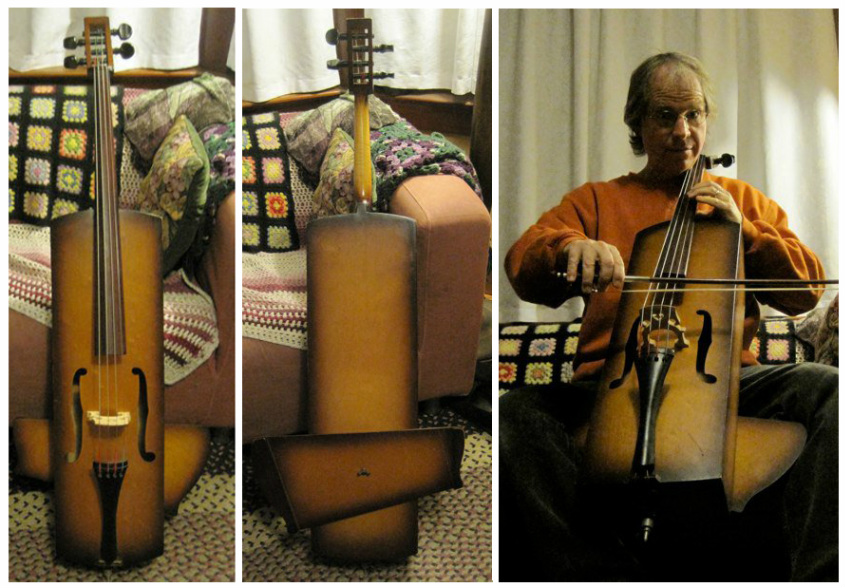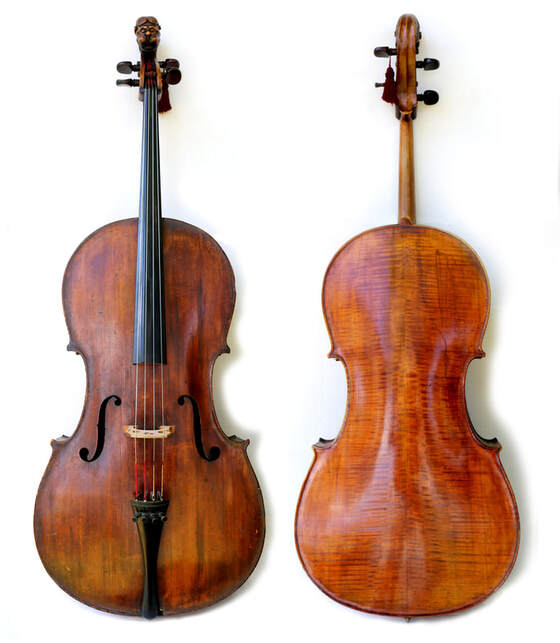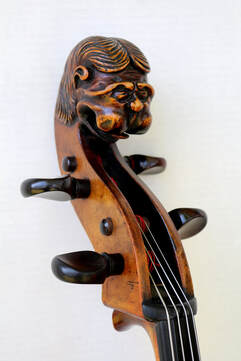'c.1900 possibly German - fitted with 5 strings (the 'easy' way).
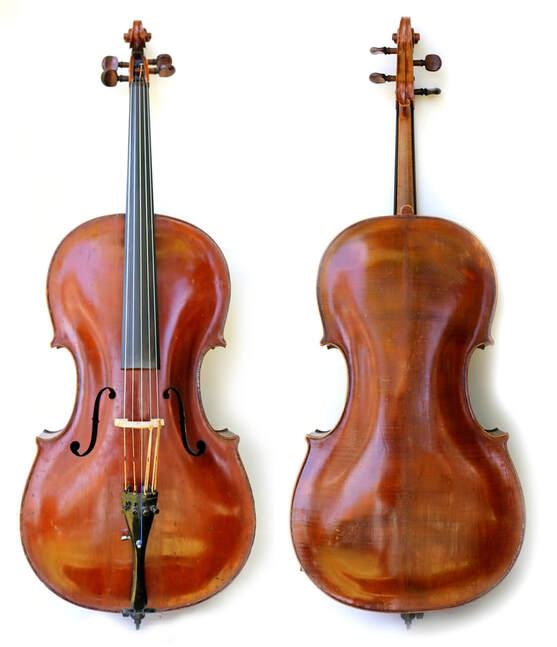
No label other than a 1910 San Francisco repair label) - this may be something like a student cello, I don't know. It was not in good shape when I got it, I had it professionally repaired and then I spent a day myself widening the fingerboard and adding a 5th (middle string by turning that string upside down and putting a guitar tuner for it in the tailpiece - quick and easy 5 string! And fairly non-distructive (you get a hole in the tailpiece and I nail hole inside the pegbox where a nail holds the end on this center string).
You can see the widened fingerboard overlapping the standard 4/4 neck from the back view.
Krishna Mondal (2008 Kolkata)
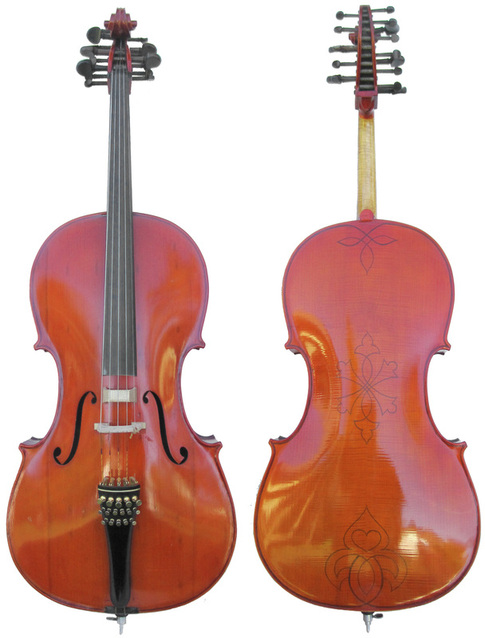
This has 5 playing strings and 11 sympathetic (jawari) strings (identical to sitar sympathetic strings).
Two tunings I like to use for the bowed strings are:
CGDAE & DADAD. The sympathetics are usually retuned for every piece of music, or, when lazy, I tune them as a chromatic scale.
I commissioned the cello from Krishna Mondal of Kolkata - He comes from a few hundred year family line of violin making in Kolkata. An amazing workshop they have there!
Two tunings I like to use for the bowed strings are:
CGDAE & DADAD. The sympathetics are usually retuned for every piece of music, or, when lazy, I tune them as a chromatic scale.
I commissioned the cello from Krishna Mondal of Kolkata - He comes from a few hundred year family line of violin making in Kolkata. An amazing workshop they have there!
Portacello - England c.1960
This was made so English kids can take the cello on the school bus!
This actually sounds only somewhat horrible ... amazing!
